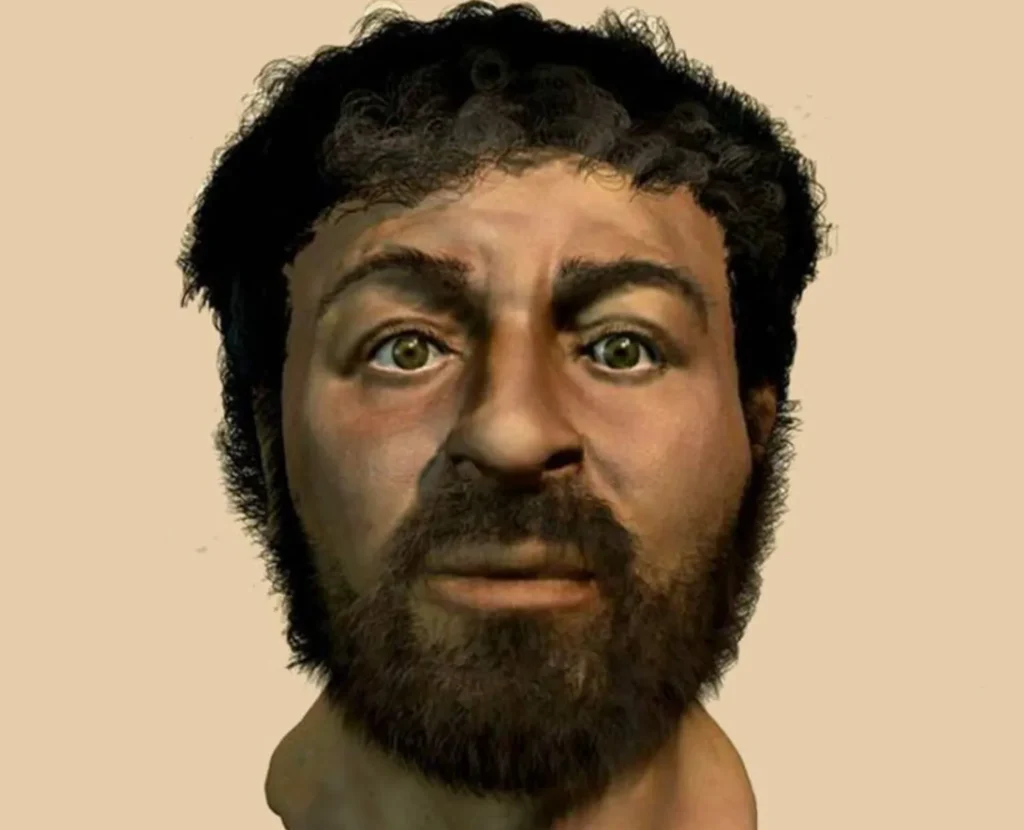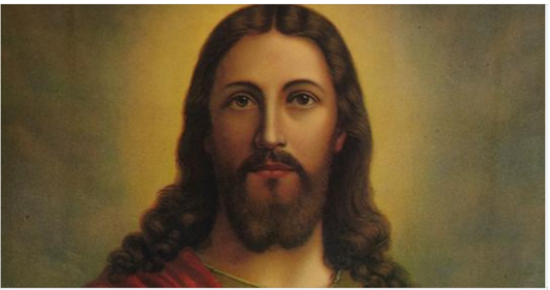For for two thousand years, theological scholars and historians have argued over what the appearance of the historical Jesus Christ might have been.
The Son of God is frequently pictured as a tall, muscular European with long, blond hair and piercing blue eyes in Renaissance art and by the Catholic Church.
Nevertheless, the majority of historians concur that a carpenter’s son born in modern-day Palestine would share the same physical traits as the locals of that time: a shorter, stockier build, and curly black hair.

A Dutch photographer and digital artist, though, may have put an end to the debate by using cutting-edge artificial intelligence technology. Bas Uterwijk, a specialist in algorithmic picture synthesis, used Artbreeder’s machine learning features to create a stunning portrait of Jesus.
His “historically accurate” depiction of the Messiah stands in stark contrast to Western art and ecclesiastical depictions of the Messiah. Mr. Uterwijk stated, “I have a background in Computer Generated images and Special Effects.
“The artificial intelligence software utilises a neural network trained on photographs and paintings of thousands human faces.
“This application makes it possible to combine multiple sources of faces and merge them in a synthesised version, guided by the artistic decisions of the user. I use it to create historical and fictional characters.
“I used several cultural depictions of Jesus of Nazareth of Byzantine and Renaissance origin including Leonardo da Vinci’s “Salvator Mundi”, and the Turin Shroud, tweaking the ethnicity to a more convincing Middle-Eastern face.”

He added: “I was happy with the result as a representation of a collective cultural depiction but at the same time I felt it lacked any historical accuracy.
“So I changed the hair and beard to a more credible length and style for the time and region and I brought in elements found in some Fayum mummy portraits, pushing the renaissance art to the background.
“The result is an artistic impression of how this man could have looked, more than it is a scientific search for an exact likeness.”
Although there has been debate on the veracity of Jesus’s appearance since Christmas 2020, this magnificent image has returned this year. The Bible claims that Jesus was born to a Jewish family in Bethlehem in 4 BC, raised there, and then finally settled in Nazareth in what is now Israel.

Although Jesus is rarely shown in any detail in the gospels, the clothes he wore are recorded in several of them. According to Joan Taylor, a seasoned researcher and the author of What Did Jesus Look Like, Jesus was most likely around the height of a man in his day, which was 5 feet 5 inches.
According to Taylor, the people of Judea and Egypt had dark olive skin, dark black hair, and brown eyes. This information is also supported by ancient writings, other artifacts, and mummy photos.
She remarked, “Everyone can imagine what Jesus looked like. We have the image of Jesus everywhere. It’s a global image. It’s a phenomenon. So we think we can recognise him. We don’t even have to work at it. But the traditional images in paintings, in fact, date to the 4th or 5th Century – the long hair, the robe, the beard.

“In reality, that’s not what he looked like at all. Jesus was not a pale person. He was not a European. He was a Jewish man of his time. He was very much of his time and place.”
The scholar, an expert in Christian origins, added: “He would have had dark skin and probably had shortish black hair – long hair was very unusual in the 1st Century – a beard and wore sandals. He was a wanderer. He was on the streets. He accepted charity from strangers. He was with the poor.
“The 2nd Century philosopher Celsus said Jesus was shabby, a vagabond who was unkempt – he looked like a beggar. That tallies with everything else we know about Jesus. He even described himself as homeless. As he said: ‘Foxes have dens and birds have nests, but the Son of Man has no place to lay his head’.”

Taylor believes that Jesus would have looked like a typical Jewish man of the first century even though he would have had some cultural contact with Europeans and Africans, who would have had darker skin.
Because Jews in Judea and Egypt intermarried often, it is possible that Jesus resembled the average person of his period in the Middle East.Copy In order to counteract the incidence of lice, archives indicate that Judeans often maintained their hair and beards short and well-combed.
The picture bears striking resemblances to the work of forensic facial reconstruction specialist Richard Neave, who in 2001 attempted to imitate the appearance of a Judean man similar to Jesus from the first century.
The BBC documentary Son of God displayed his likeness, which was modeled by an Israelite skull from the first century. There was a picture of a short, stocky man with dark hair, clipped beard, olive skin, and.
Please SHARE this article with Family and Friends!
